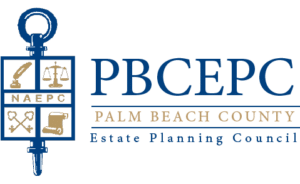
By Mark R. Parthemer, Esq and Leonard J. Adler, Esq.
Bessemer Trust
Siri won’t answer that question, but what follows does
The federal funds rate is the interest rate banks charge each other for short-term loans. The Federal Reserve uses it to influence the economy, seeking full employment, stable prices, and moderate long-term interest rates.
But what does the fed funds rate have to do with estate planning? Quite a lot, though not directly. An increase in the federal funds rate typically unleashes a chain-reaction effect on long-term rates. Basically, when the Fed raises the fed funds rate, banks raise their prime rate. An increase in the prime rate will increase costs for consumer borrowing (e.g., mortgages, business and car loans) and ultimately influence bond yields. Such yields determine the two primary interest-rate metrics used in estate tax planning:
- The applicable federal rate (AFR) – minimum interest to be charged on loans to avoid triggering imputed income or gift tax. It is trifurcated into short, mid, and long terms based on the duration of the borrowing (3 years or less, more than 3 but not more than 9 years, and longer than 9 years). It reflects the average interest rate for relevant yields on similar-duration Treasury obligations.
- The Section 7520 rate – legally required rate for several estate planning strategies. Defined in Section 7520 of the Internal Revenue Code, it equals 120% of the midterm AFR, rounded to the nearest two-tenths of one percent. It is recalculated monthly.
Since established on May 1, 1989, it has averaged 6.0%. But in this current extended low rate environment, it has not matched the average since January, 2001 (when the Baltimore Ravens won their first Super Bowl, a stamp cost 34 cents, and a gallon of gas cost less than a dollar).
Which Strategies for Which Rate Environment?
Gift tax value often is based on the “subtraction method,” by which the taxable gift is determined by subtracting the computed value of the retained interest from the fair market value (FMV) of the transferred asset (i.e., FMV – retained interest = taxable gift). The retained interest is computed using the 7520 rate. Thus, the interest rate directly impacts the taxable gift amount.
Following are seven common planning strategies:
- Charitable Remainder Annuity Trusts (CRATs) – annuity paid to one or more persons for a term of years or lifetime; remainder to charity.
- Qualified Personal Residence Trusts (QPRTs) – residence placed in trust with a retained right to live in it; remainder to heirs*.
- Split Interest Purchase – senior generation purchases a life income interest in an asset; younger generation purchases the remainder interest.
- Grantor Retained Annuity Trusts (GRATs) – annuity paid to grantor; remainder to heirs*.
- Charitable Lead Annuity Trusts (CLATs) – annuity paid to charity for a period of years; remainder to heirs*.
- Private annuity – asset sold to younger generation*; paid for via an annuity to seller for a period of years or lifetime.
- Intra-family loan – loan to a friend or family member* at the minimum interest rate needed to avoid imputed income or gift. Payments are often interest-only with a balloon at the end.
*Outright or in trust.
This table reflects whether these strategies are more efficient in a higher or lower interest rate environment:

What Does An Inverted Yield Curve Mean For Your Plan?
The new tax act and current economy mandate “running the numbers” to ensure your plan remains accurate and tax-optimized. Exemptions have temporarily doubled, potentially wreaking havoc on a formula based estate plan. If you are unsure whether you have one, ask your attorney.
Recently, we have had a “flattened” and an “inverted” yield curve. In oversimplified terms, these occur when the yields of longer and shorter duration bonds are disproportionately close to each other (flattened) or a longer rate is less than a shorter one (inverted). This directly impacts AFR rates, as explained above.
Perhaps you extended a loan to help a family member or to a trusts/entity as part of a sophisticated tax strategy. With short, mid and long-term AFR rates less disparate than typical, it may be possible to refinance (“lock in”) the current interest rate for a new (longer) term at little or no additional cost to protect against likely higher rates in the future.
Next Step: Speak with Your Advisor
Rising interest rates impact many aspects of our lives, including our estate plans. We’ve identified the basic characteristics of some of the most popular wealth-transfer strategies, and when they tend to be most efficient. However, the optimal wealth-transfer strategy for you entails many more considerations. Your advisors can help you weigh the potential benefits of different strategies.
Mark R. Parthemer, Esq. and Leonard J. Adler, Esq. are both Managing Directors and Senior Fiduciary Counsel of Bessemer Trust, an exclusive wealth management firm for high net worth families.
